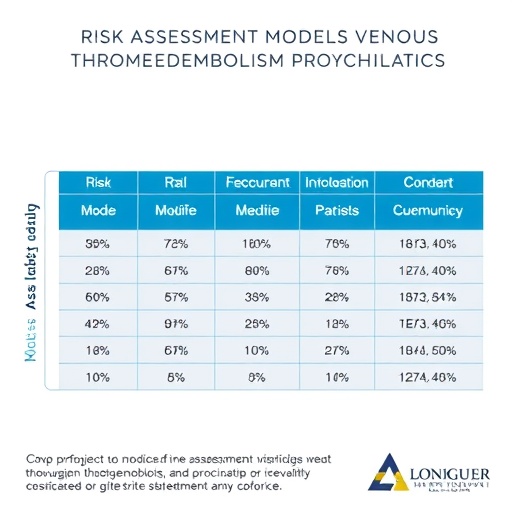
In the continuous battle against COVID-19, scientists and clinicians remain vigilant, unraveling the intricate patterns of the disease, its long-term effects, and the implications for patient care. A groundbreaking cohort study recently published in Nature Communications sheds new light on a troubling phenomenon that has emerged during the pandemic’s evolving landscape: SARS-CoV-2 viral rebound following hospitalization. This comprehensive research thoroughly investigates the relationship between viral rebound and subsequent adverse outcomes such as mortality and re-hospitalization in a large population of patients initially admitted with COVID-19.
The phenomenon of viral rebound—where patients, after an apparent recovery or suppression of viral load, experience a resurgence of detectable SARS-CoV-2 RNA—has garnered increasing attention amid rising case reports and anecdotal evidence. Yet, until now, large-scale data quantifying its clinical consequences post-hospitalization have been scarce. The study in focus meticulously tracked thousands of patients, assembling a detailed dataset to explore not only the frequency of rebound but also its links to serious sequelae in a real-world setting.
Utilizing a cohort design, the researchers examined electronic health records of patients hospitalized with confirmed COVID-19 infections, analyzing follow-up data that extended beyond the acute phase of illness. This approach enabled a longitudinal perspective on patient outcomes, allowing the quantification of mortality rates and readmission statistics tied to rebound events. Methodologically rigorous, the study controlled for confounding variables such as age, comorbidities, and vaccination status to isolate the independent impact of viral rebound on these serious endpoints.
.adsslot_tU321rZn9B{width:728px !important;height:90px !important;}
@media(max-width:1199px){ .adsslot_tU321rZn9B{width:468px !important;height:60px !important;}
}
@media(max-width:767px){ .adsslot_tU321rZn9B{width:320px !important;height:50px !important;}
}
ADVERTISEMENT
The results reveal a striking pattern: patients exhibiting viral rebound post-discharge faced significantly increased risks of both mortality and subsequent hospital admission. Importantly, this association persisted strongly even after adjusting for established risk factors. The findings intimate that viral rebound is not a benign virologic anomaly but rather a critical clinical marker that portends a worse prognosis and highlights the need for intensified surveillance and potential therapeutic intervention.
Mechanistically, the rebound phenomenon challenges our understanding of viral clearance and immune clearance dynamics. It posits that SARS-CoV-2 may persist or re-emerge due to incomplete eradication or viral reservoirs in sanctuary sites within the body where immune surveillance is less effective. Additionally, it raises questions about how antiviral therapies, given during acute infection, might influence viral kinetics and the immune response landscape to inadvertently facilitate rebound in certain patient subsets.
The comprehensive analysis also examined the timing of rebound events, noting that these occurrences predominantly transpired within a defined window following hospital discharge. This temporal clustering suggests that rebound may reflect an ongoing viral-immune interaction phase, pointing to a critical period post-acute illness where patients remain vulnerable to adverse outcomes. Such insights could inform post-discharge monitoring protocols and the timing of interventions aimed at preventing rebound sequelae.
Interestingly, while the study identified rebound as a significant risk factor for poor outcomes, it also reported variation in rebound frequency and severity across different demographic groups and clinical profiles. For instance, older adults and those with preexisting immunosuppressive conditions were disproportionately affected, underscoring the heterogeneity of viral-host interactions and the importance of personalized medicine approaches in managing COVID-19.
This large-scale investigation underscores the necessity of incorporating viral rebound monitoring into routine clinical practice for COVID-19 patients recovering from severe disease. Diagnostic strategies that routinely measure viral RNA presence post-discharge could enable early identification of rebound cases. Coupled with clinical risk stratification, such protocols may facilitate timely interventions to mitigate the elevated risks of death and rehospitalization.
The study’s implications extend beyond clinical management to influence public health policies. Identifying patients at heightened risk of rebound-related complications could support targeted allocation of healthcare resources and inform guidelines for post-discharge care. The findings advocate for enhanced post-acute COVID-19 care models that integrate virologic and clinical data to optimize patient outcomes during the vulnerable convalescent phase.
While the research provides robust evidence linking viral rebound with adverse outcomes, it simultaneously raises critical questions warranting further exploration. The precise immunopathological mechanisms driving rebound remain to be elucidated, as does the role of emerging SARS-CoV-2 variants with varying replicative fitness and immune evasion capacities. Additionally, the impact of different antiviral regimens on rebound frequency and severity is an open field for ongoing clinical trials.
Notably, the study also hints at the dynamic interplay between vaccination, antiviral treatments, and viral rebound, suggesting a complex landscape where these factors may interact in unexpected ways. Understanding these nuances is essential for refining therapeutic approaches and vaccination strategies to minimize rebound risk and its consequences.
This work aligns with a growing body of literature emphasizing the post-acute phase of COVID-19 as a critical period of heightened vulnerability. It contributes substantially to defining biomarkers of adverse prognosis and delineating novel targets for clinical intervention. By linking a virologic event—rebound—to concrete clinical endpoints such as mortality and hospital readmission, the study marks a crucial step toward a more nuanced comprehension of COVID-19’s long tail.
In summary, this cohort study powerfully illuminates the clinical significance of SARS-CoV-2 rebound following hospitalization for COVID-19. Its methodological rigor, substantial cohort size, and detailed analysis provide compelling evidence that viral rebound is a harbinger of poor post-acute outcomes rather than a trivial laboratory finding. As the pandemic endures, such insights will be instrumental in shaping more effective patient management strategies, tailoring treatments, and ultimately reducing the toll of COVID-19 beyond the acute infection phase.
Future research directions prompted by these findings will undoubtedly explore therapeutic innovations targeting rebound prevention, refined monitoring technologies enabling real-time viral detection, and personalized risk prediction models leveraging clinical, virological, and immunological data. Harnessing these advances will be pivotal in altering the trajectory of recovery for COVID-19 survivors worldwide.
In an era defined by viral evolution and therapeutic innovation, understanding the complexities of post-acute viral dynamics remains a critical frontier. This seminal study not only deepens foundational knowledge but also highlights an urgent clinical priority—addressing and mitigating SARS-CoV-2 rebound to improve patient survival and quality of life after severe COVID-19.
Subject of Research: SARS-CoV-2 viral rebound and its association with post-acute mortality and hospitalization outcomes in hospitalized COVID-19 patients.
Article Title: SARS-CoV-2 rebound and post-acute mortality and hospitalization among patients admitted with COVID-19: cohort study.
Article References:
Chong, K.C., Wei, Y., Jia, K.M. et al. SARS-CoV-2 rebound and post-acute mortality and hospitalization among patients admitted with COVID-19: cohort study. Nat Commun 16, 6924 (2025). https://doi.org/10.1038/s41467-025-61737-7
Image Credits: AI Generated
Tags: clinical consequences of viral reboundcohort study on COVID-19electronic health records analysishospitalization and re-hospitalization risksimplications for COVID-19 treatmentlong-term effects of COVID-19longitudinal study of COVID-19 patientsmortality associated with COVID-19post-COVID patient carereal-world patient outcomes COVID-19resurgence of SARS-CoV-2 RNASARS-CoV-2 viral rebound





